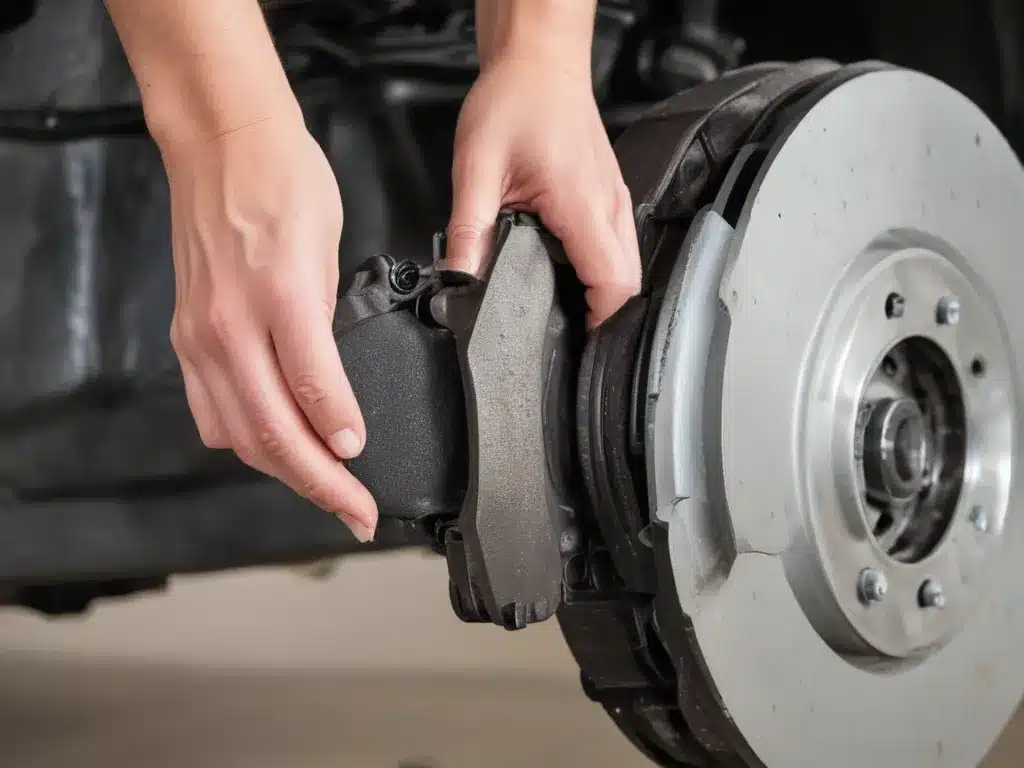
Uncovering the Mysteries of Brake Pad Replacement
As I pull into the driveway after a long day, the familiar sound of my car’s brakes suddenly catches my attention. That ominous grinding noise. Uh oh, it looks like it’s time to tackle the dreaded task of brake pad replacement. But don’t worry, I’ve got you covered! In this in-depth guide, I’ll take you through the entire process of diagnosing and replacing those pesky brake pads, so you can keep your ride safe and sound.
Identifying the Signs of Worn Brake Pads
Let’s start by understanding the telltale signs that your brake pads are on their last legs. The most obvious indicator is that grinding sound I mentioned – it’s like a symphony of metal-on-metal that you really don’t want to hear. But that’s not the only clue. Have you noticed your stopping distance increasing? That’s a clear sign that your pads are wearing thin and need some attention. And let’s not forget the good old visual inspection – if you can see the pads through the wheel spokes and they’re looking mighty thin, it’s time to take action.
Preparing for the Brake Pad Replacement Process
Alright, now that we’ve identified the problem, it’s time to get to work. Before we dive in, let’s make sure we have all the necessary tools and equipment. You’ll need a decent set of wrenches, a jack, and perhaps a caliper tool to help retract the pistons. And of course, don’t forget the replacement brake pads – make sure to get the right ones for your specific make and model. With everything gathered, it’s time to get our hands dirty.
Removing the Old Brake Pads
Slowly and carefully, I begin the process of removing the old brake pads. First, I’ll need to loosen the lug nuts on the wheel and then jack up the car. Once the wheel is off, I can access the caliper and pads. Gently squeeze the caliper piston back into the caliper to make room for the new pads. Then, it’s time to remove the old pads and give the caliper a thorough cleaning.
Installing the New Brake Pads
With the old pads out, it’s time to install the new ones. I’ll need to make sure the caliper is properly aligned and that the new pads fit snugly into the caliper. Once they’re in place, I’ll carefully reattach the caliper and torque the bolts to the recommended specification. Don’t forget to pump the brake pedal a few times to ensure the pads are properly seated.
Bedding in the New Brake Pads
Alright, the hard part is done, but we’re not quite finished yet. To ensure the new brake pads perform at their best, we need to “bed” them in. This simply means gently braking a few times to help the pads conform to the rotor surface. I’ll start with light braking and gradually increase the pressure, making sure to avoid any sudden or hard stops.
Verifying the Brake System’s Functionality
With the new pads installed and bedded in, it’s time to take my car for a test drive. I’ll be on the lookout for any unusual noises, vibrations, or changes in brake performance. If everything checks out, I can breathe a sigh of relief and know that my car’s braking system is back in top shape.
Maintaining Brake Pad Health
But the work doesn’t stop there. To keep my brake pads in tip-top condition, I’ll need to stay on top of regular maintenance. That means periodically inspecting the pads for wear and replacing them as needed. I’ll also want to keep an eye on the brake rotors and ensure they’re not excessively worn or warped.
The Importance of Brake Maintenance
Brakes are one of the most crucial safety systems on your vehicle, so it’s essential to keep them in excellent condition. Neglecting brake maintenance can not only jeopardize your safety, but it can also lead to costly repairs down the line. That’s why it’s so important to stay on top of this task and not let those pesky brake pads catch you by surprise.
Conclusion: Mastering Brake Pad Replacement
Well, there you have it, folks. Diagnosing and replacing faulty brake pads may seem like a daunting task, but with the right knowledge and a little elbow grease, it’s a job that any car enthusiast can tackle. Remember, safety should always be your top priority, so don’t hesitate to seek professional help if you’re ever unsure. Now, let’s get out there and keep those brakes in tip-top shape!
And if you’re ever in need of a reliable oil change or other automotive services, be sure to check out Auto Oil and Fluid. Their team of experts is always ready to lend a hand and keep your ride running smoothly.


